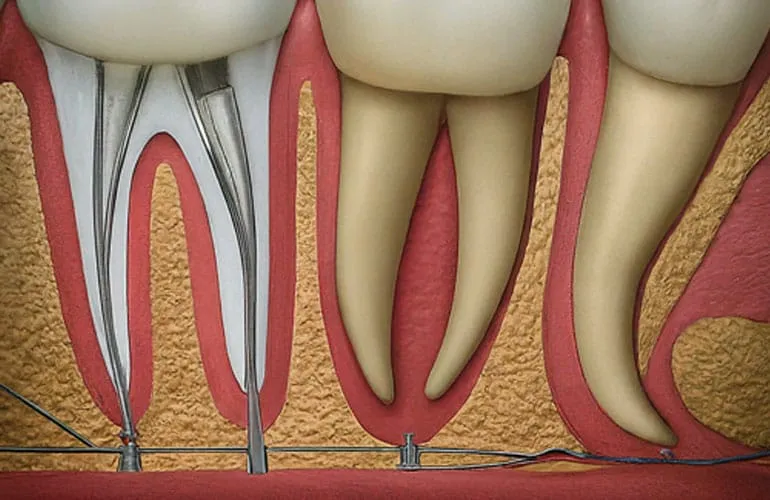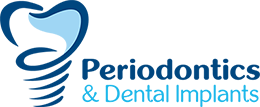
Restore and maintain the health, function, and aesthetics of your gums and supporting structures.
At Smiley Implants, we offer comprehensive periodontal care, including advanced surgical treatments to address severe gum disease and other complex dental issues. Periodontal surgery is a critical component of our efforts to restore and maintain the health, function, and aesthetics of your gums and supporting structures. Learn more about how periodontal surgery can improve your oral health and enhance your quality of life.
What is Periodontal Surgery?
Periodontal surgery encompasses a variety of surgical procedures aimed at treating advanced periodontal disease, correcting gum defects, and enhancing the overall health and appearance of your gums. These procedures are typically recommended when non-surgical treatments, such as scaling and root planing, are not sufficient to control the disease or repair damage.
Types of Periodontal Surgery
-
Pocket Reduction Surgery (Osseous Surgery):
- Purpose: To reduce the depth of periodontal pockets that harbor bacteria and contribute to gum disease.
- Procedure: The gums are folded back to remove disease-causing bacteria and smooth irregular surfaces of the damaged bone, promoting reattachment of the gum tissue.
-
Gum Graft Surgery:
- Purpose: To cover exposed roots, reduce sensitivity, and improve the appearance of receding gums.
- Procedure: Tissue is taken from the roof of the mouth or another donor source and grafted onto the affected area to protect the roots and restore gum health.
-
- Purpose: To rebuild and strengthen the jawbone that has been damaged by periodontal disease.
- Procedure: Bone graft material, either synthetic or from a donor, is placed in areas where bone loss has occurred to stimulate new bone growth.
-
- Purpose: To expose more of the tooth structure for restorative procedures or to improve the aesthetics of a "gummy" smile.
- Procedure: Excess gum tissue and bone are removed to reveal more of the tooth's surface.
-
Guided Tissue Regeneration (GTR):
- Purpose: To encourage the regrowth of bone and soft tissue lost to periodontal disease.
- Procedure: A special membrane is placed between the bone and gum tissue to prevent the gum from growing into the bone area, allowing the bone and connective tissue to regenerate.
-
- Purpose: To replace missing teeth and restore full function and aesthetics.
- Procedure: Titanium implants are surgically placed into the jawbone, serving as a foundation for prosthetic teeth.
Benefits of Periodontal Surgery
- Improved Oral Health: Effectively treats severe gum disease, reducing infection and inflammation.
- Prevents Tooth Loss: Strengthens the support around teeth, reducing the risk of tooth loss.
- Enhanced Aesthetics: Corrects gum defects and improves the appearance of your smile.
- Restored Function: Repairs damage to the gums and bone, restoring normal chewing and speaking abilities.
- Long-Term Results: Provides a stable foundation for teeth and dental restorations, ensuring lasting oral health.
The Periodontal Surgery Procedure
- Initial Consultation: Our periodontist will conduct a comprehensive examination, including X-rays and periodontal charting, to assess the extent of the disease and determine the appropriate surgical treatment.
- Treatment Planning: A personalized treatment plan is developed, explaining the recommended procedures, expected outcomes, and aftercare requirements.
- Surgery: The procedure is performed under local anesthesia, with sedation options available for your comfort. Depending on the type of surgery, the periodontist will remove diseased tissue, reshape bone, or graft new tissue to restore health and function.
- Post-Procedure Care: Detailed aftercare instructions are provided to manage discomfort, promote healing, and maintain oral hygiene. Follow-up appointments are scheduled to monitor progress and ensure optimal recovery.
Recovery and Aftercare
- Initial Healing: Some swelling, bleeding, and discomfort are normal after surgery and can be managed with prescribed pain medication and cold compresses.
- Oral Hygiene: Maintain a gentle but thorough oral hygiene routine to keep the surgical site clean and prevent infection.
- Diet: Eat soft foods and avoid hot, spicy, or crunchy foods that could irritate the gums during the initial healing period.
- Follow-Up Visits: Regular follow-up visits are crucial to monitor healing and assess the success of the surgery. Additional cleanings and maintenance may be required to ensure long-term results.
Periodontal surgery is an effective way to address severe gum disease and restore the health and aesthetics of your smile. If you are experiencing symptoms of advanced periodontal disease or have been recommended for surgical treatment, contact us today to schedule a consultation. Dr. Hassan is committed to providing expert care and achieving the best possible outcomes for your periodontal health.

